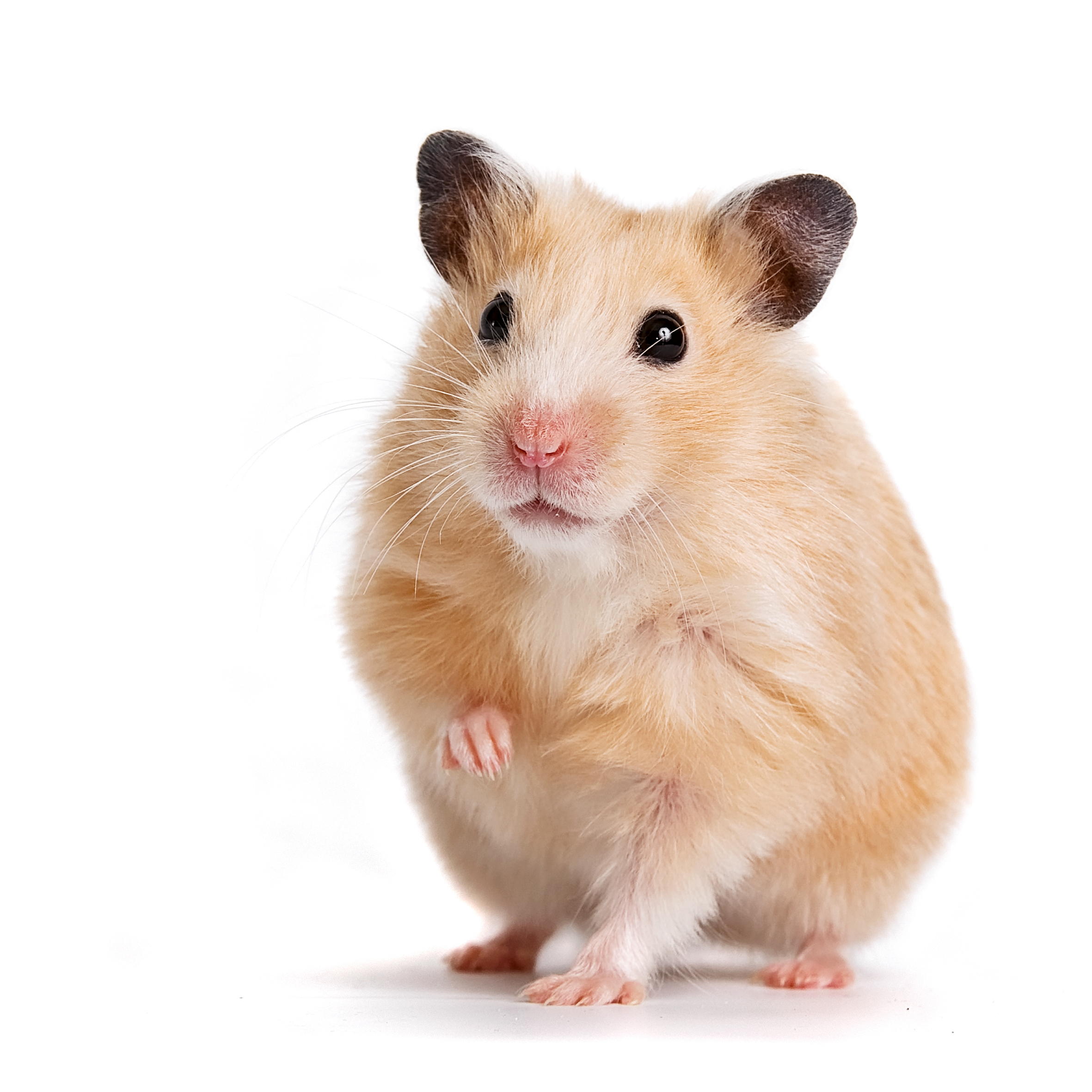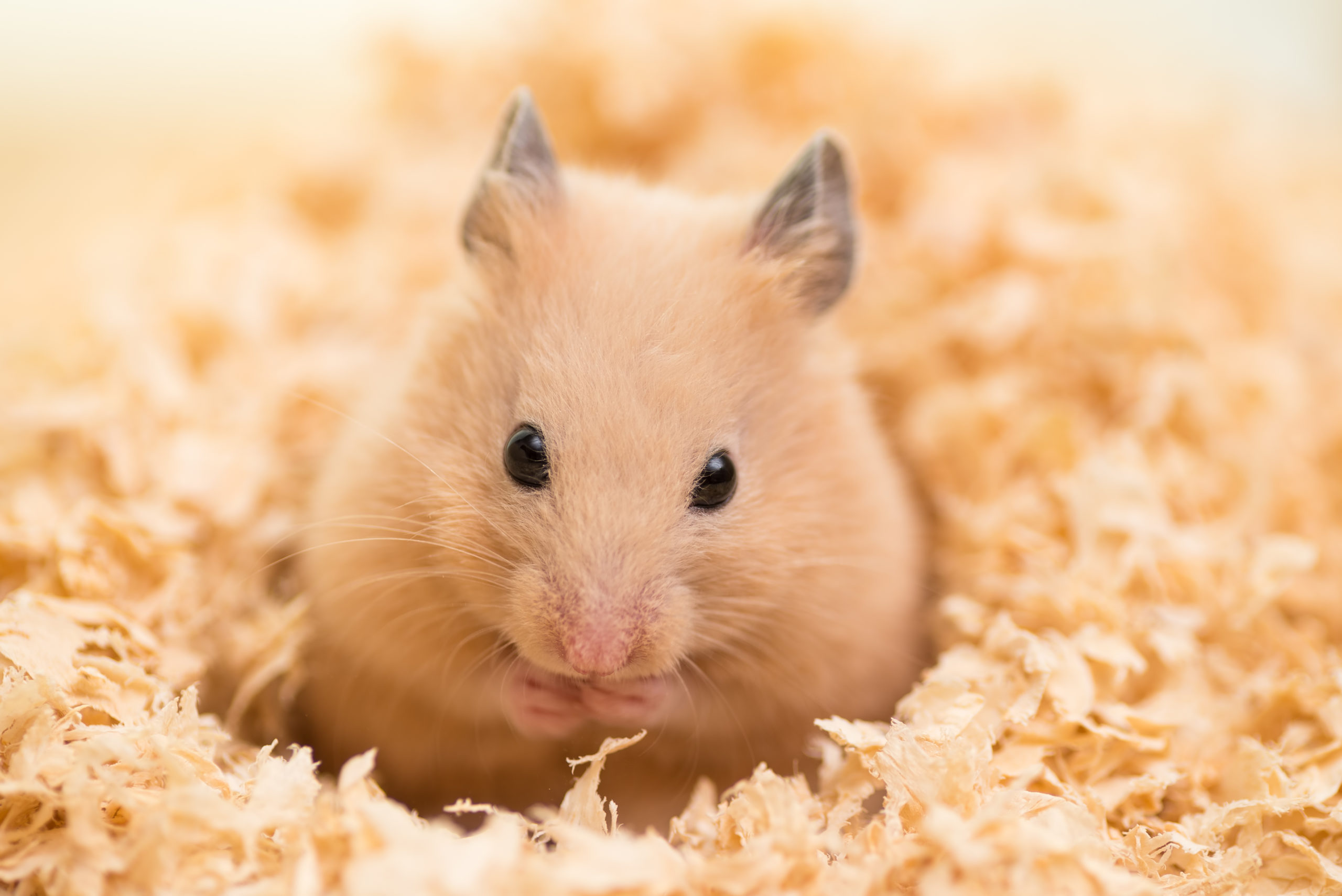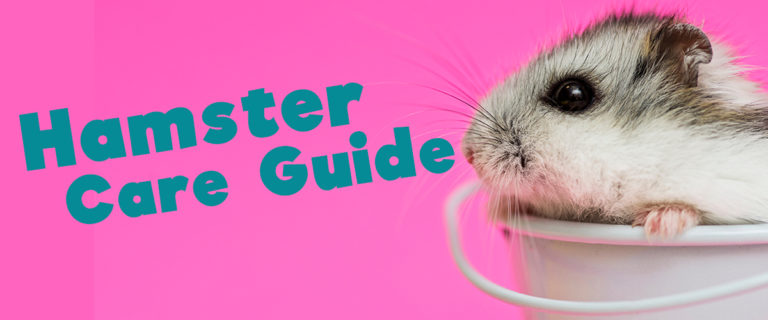Have you ever had a hamster? Or are you going to adopt one? Thinking about it? We thought it would help any potential adopters (or newbie 'rents) to come up with a short little hamster care guide to help you through the journey. Let's start.
Hamster Type
There are lots of different types of hamsters. So, before you bring one (or two) home, consider the type that will work best for your family. Syrian hamsters prefer to be alone. Once they reach maturity, if left in pairs, they’ll likely fight over territory. Syrians definitely prefer to be alone at home.
If you’re looking for two or more hamsters, consider dwarfs, Russians or Chinese. They can also be territorial, but if they’re littermates or a mother and child, they should be fine. As always, though, you’ll need to keep an eye on their behavior. If you see anything that seems off, separate and consult with your exotic vet.
Hamster Living Space
Hamsters may be small, but that doesn't mean their living space needs to be. "Starter" cages that don't allow enough room for normal behavior and enrichment can lead to boredom, depression, aggression, and even health issues. Hamster habitat size is REALLY important to consider when it comes to being a pet parent to one of these little sweeties.

Cage
Just like we see with chinchillas and guinea pigs, a lot of the commercial cages on the market are simply inappropriate and too small for hamsters.
The bare minimum hamster habitat size, regardless of breed, is 450 square inches. Bigger is always better. Hamsters are more active than you may think, especially because they are nocturnal and burn off their energy while you sleep. Experts have started to recommend at least 800 square inches for a Syrian hamster to thrive, and 650 square inches for dwarf hamsters.
When calculating cage size, multiply length and width only, not height. In the wild, hamsters live in very large open areas, which is why floor space is the most important factor. Finding properly sized, safe hamster cages isn’t always easy. Luckily, bin cages are both cost-effective and easy to create DIY-style!
Remember, the majority of these little guys' lives will be spent within the four walls you choose. Pick a roomy, yet cozy home with plenty of species-appropriate enrichment to make their years as fulfilling as possible.
Bedding
Your hamster’s bedding should be made of a safe material, not be dusty, and not smell. Any scented bedding could bother your hamster's sensitive nose, no matter what the packaging may say.

There isn’t really one “best” bedding option; the right choice comes down to your own lifestyle, budget, and hamster's personal preference. You can’t go wrong with these:
1. Aspen Wood Shavings
It’s totally possible to pinch pennies and still buy healthy small animal bedding. Aspen is a wallet-friendly, safe alternative to softwood bedding like dangerous cedar. It’s compostable, too – less waste! Our aspen bedding is made from kiln-dried wood shaved from logs. You want to avoid brands that instead use the potentially dangerous leftovers from reclaimed paper production, called sludge.
2. Soft Paper Bedding
Paper bedding is great for allergy sufferers. It’s not dusty and there’s no risk from dangerous aromatic oils. Plus, it’s extra cozy! Try unbleached white paper bedding during recovery from surgery or illness to easily monitor droppings. Our paper bedding isn’t from recycled paper that has been printed on, so you can rest easy knowing there really aren’t any toxic residues.
Hamster Diet
A hamster care guide obviously wouldn't be complete without talking about diet. So, let's talk about diet.
Although small, hamsters require a suitable space and a proper diet to keep them healthy. Diet is key. For all living things, really. The secret to health is in their food. It’s true. Every living thing needs food to survive. And higher quality food (with the proper nutrients and minerals) = healthier, happier hamster.
A Balanced Pelleted Food Diet Can Go A Long Way
Seed mixes are okay, but unfortunately, they allow hamsters to pick and choose what to eat, which can contribute to a nutritional imbalance. Giving a high-quality Timothy-based pellet diet doesn’t allow your small animal to be picky. And we know these little guys can be picky with a capital P. Pellets, rather than seed mixes, although basic, are the way to go. With some supplementation of other foods, they’re getting the diet they need.
…But How Much Pelleted Food Should You Give?
Pelleted hamster food? About 1 1/2 tablespoons per day. Did you know that Syrian and Dwarf hamsters will need about the same amount even though there’s a big difference in size? Dwarf hamster metabolism is a lot faster, so they need more calories, even though their bodies are a lot smaller.
How to Choose Pelleted Food For Your Hamster
We’ve said it before and we’ll say it again: stay away from hamster food that’s full of additives and unnecessary sugar. It’s yucky. Always buy pellets that look natural. Stay away from the colored stuff. (We know it’s pretty, but stand your ground and go for the plain lookin’ pellets.) Timothy-based pellets provide fiber, promote healthy teeth and result in less waste. And that deserves a hashtag: #winning.
Fitting Pelleted Food Into Their Daily Diet
How many times have you heard “it’s all about balance?” Well, it kind of really is. Hamsters should eat a balanced diet containing all essential nutrients and minerals: A pelleted hamster food and small quantities of greens/fresh veggies/fruit can supplement the pelleted food.
Don’t Forget the Hay!
You usually think rabbit or guinea pig when you think hay. Although hay isn’t nutritionally necessary for hamsters, it’s a safe and healthy supplement that can be offered a few times per week. Plus, a good Timothy hay is great to keep their teeth in tip-top shape.
Fresh Veggies Are Good, Too.
…But don’t go overboard. Hamsters are small animals, and too many veggies in their diet can cause diarrhea. Small amounts of carrots (high in sugar though, so be careful) and cucumbers are enough. Really. Or try cauliflower or broccoli. You know, to mix it up a little.
Oh, And Water.
Fresh water. Always. We know it’s obvious, but we’re gonna say it anyway. Tip: Try a valveless sipper tube. Because small rodents aren’t able to apply strong suction, they may have difficulty with the resistance from water flow in a ball-valve sipper tube. Gotta keep ‘em hydrated!
So, if you've decided to take the leap and add a hamster to your family, it's best to buy everything you need (cage, food, water bottle, bedding) before you bring your pet home. The transition will be much easier this way... it can be stressful for a hamster to go from one place to another. Especially quickly. Let them get adjusted.
Do things right, and you and your family will probably love having a hamster. All of us who have hamsters in our families absolutely love it! So, we hope you learned the basics of what hamsters need in this mini hamster care guide. (It was a great refresher for us.)





